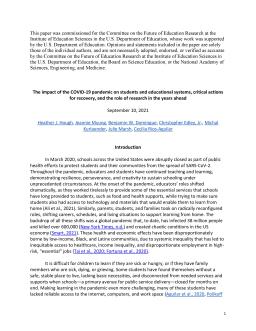How School Districts Craft Coherence Towards Continuous Improvement
November 2022 | Case study, Article
This study uses qualitative case study methods to explore how educators establish system-wide continuous improvement capabilities and coherence for implementation, taking into consideration the local contexts. Educators use two bridging approaches to crafting coherence: weaving and stacking. The study contributes to understanding how leaders create shared meaning and practice in complex and dynamic educational systems. The implications for both research and practice are discussed.
A Summary Brief
October 2022 | Policy brief
This brief outlines findings from a study that examines the English proficiency levels and growth of newcomer English learner students in comparison to their non-newcomer peers. It was found that while newcomer students tend to have lower initial English proficiency levels, their English proficiency develops quickly. There is, however, wide variation in newcomer English level and growth patterns, and schools play an important role in fostering growth. Additionally, newcomers enter school at earlier stages of English proficiency than non-newcomer English learner peers.
Pagination
- Previous page
- Page 36
- Next page

